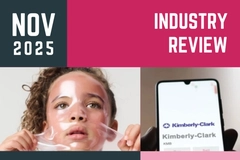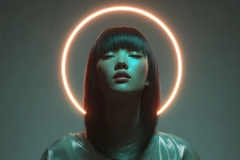Ipsy 2025 trend report identifies credibility, color, and “skinified” routines

Ipsy has released its Beauty Discovery Report 2025, spotlighting an increasing demand for makeup-artist-founded brands, Gen Z’s focus on lip gloss, and maximalist makeup. Other highlights from the report included berry-colored lips and serums surpassing foundation in popularity.
The annual report reveals five key trends expected to shape the beauty industry in the coming year. It draws insights from the beauty subscription service’s 20 million members’ purchasing behavior and a database of over 200 million product reviews.
Personal Care Insights speaks with Francine Li, Ipsy’s chief marketing officer, about the dominant themes identified in consumer demand and product innovations.
Crazy for credibility
According to Ipsy’s findings, consumers increasingly gravitate toward brands founded by makeup artists (MUAs). Three of five Ipsy members reported greater trust in MUA-founded brands over celebrity lines.
The report attributes this trust to the perception that MUA brands offer professional-grade products, grounded in expertise and performance.
“The beauty category has exploded, offering more ingredients, options, products, and customization than ever before. Along with that comes a greater need for education and expertise from trusted sources,” Li says.
“MUA-founded brands give consumers the confidence that their products have been tried and tested by the best of the best, while also providing a level of built-in education through MUA-owned channels.”
.jpg) In August 2024, orders for berry-shaded products surged by 422%.Lip service
In August 2024, orders for berry-shaded products surged by 422%.Lip service
Lip products are seeing renewed consumer interest, with gloss identified as the fastest-growing lip category in 2024. According to Ipsy, while millennials are focused on fragrances, Gen Z consumers gravitate toward lip products.
“Lip products provide a low-cost, high-impact way for Gen Z to experiment with makeup without breaking the bank, in addition to being low-commitment for exploring various makeup trends,” Li says.
Additionally, the report spotlights berry-toned lipsticks’ uptick in popularity, positioning the color trend as part of a broader consumer desire to define a “signature lip.” In August 2024, orders for berry shades surged by 422%, and that momentum has carried into the new year, with interest in berry-colored products up 50% year-over-year in 2025.
Maximizing makeup
Consumers’ appetite for bold color extends beyond lip products and influences multiple makeup categories.
The report highlights a “maximalism” trend strongly influenced by regional aesthetics. Cities with rich cultural identities and strong art and design communities, such as Miami, Chicago, and San Antonio, US, are leading adopters.
In these areas, consumers are applying their “more is more” aesthetic to cosmetics, fueling demand for vivid, expressive makeup palettes.
“Our core audience sits squarely at the intersection of maximalism and exploration. Our members are actively looking for ways to play with beauty,” says Li.
Skinification replaces coverage.jpg) Consumers are applying their “more is more” aesthetic to cosmetics, with bold color palettes trending.
Consumers are applying their “more is more” aesthetic to cosmetics, with bold color palettes trending.
According to the report, serum-style complexion products are now outpacing traditional foundations in popularity, signaling a shift in how consumers approach their base routines.
This transition reflects the broader “skinification” of beauty, where the lines between skin care and makeup continue to blur. Instead of relying on heavy coverage, users gravitate toward lightweight, functional products that offer both aesthetic enhancement and skin care benefits.
The report claims 89% of Ipsy’s 2024 subscriptions included serums and moisturizers, the latter being the most-purchased category overall. The figure continues to increase at a 9% year-over-year rate in 2025. Foundation was not in the top five purchased categories for Gen Z or millennials.
Li attributes the growing consumer demand for multi-functional products and formulations as a key driver for serum’s current popularity. “Serums offer consumers a wider variety of functional benefits — blending tints, SPF, hydration, and more in one product,” she says.
“We are seeing both Gen Z and millennials demanding products that do more. It is not enough for a product’s ingredients to make you look good; they need to also have a functional benefit for the user.”













